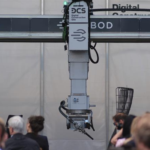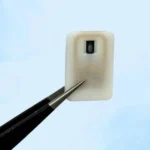The School of Aeronautics, Astronautics and Mechanics at Tongji University, in collaboration with the Shanghai Aircraft Design and Research Institute of COMAC, has successfully developed a domestic drone using continuous carbon fibre reinforced resin matrix composites. The drone’s successful test flight highlights the potential of this technology in the rapidly evolving field of drone manufacturing.
Advancements in 3D Printed Drone Technology
The so called “Tongfei n°1” drone features a canard-type swept-back wing design with a wingspan of 2.1 meters and a remarkably low take-off weight of only 1,400 grams. This development showcases the application potential of continuous fibre composite 3D printing technology in creating lightweight and aerodynamically efficient drones. The use of this technology allows for the rapid prototyping of complex topological structures, essential for the production of lightweight drones with intricate designs.
This achievement represents a significant milestone in Tongji University’s ongoing exploration of rapid manufacturing techniques for lightweight composite drones. The university’s scientific research team, led by Professor Li Yan, is funded by the national key R&D project “Large Format Fiber Reinforced Thermoplastic Composite Materials Additive Manufacturing Technology and Equipment.” The successful test flight of “Tongfei n°1” serves as a validation of the project’s progress in applying this innovative technology to the aircraft industry.

Test Flight and Technological Potential
During the test flight, “Tongfei n°1” exhibited impressive performance in terms of maneuverability, durability, response speed, flight safety, and stability. These results underscore the advantages of continuous carbon fibre reinforced composite 3D printing technology in drone manufacturing. The ability to rapidly produce complex, lightweight structures positions this technology as a promising tool for the future of drone design and production.
The development of “Tongfei n°1” by Tongji University represents a significant step forward in applying continuous carbon fibre composite 3D printing technology to drone manufacturing. The successful test flight highlights the technology’s ability to rapidly produce lightweight, high-performance drones with complex designs. As research progresses, this technology is set to play an important role in the future of drone development, opening up new opportunities for design innovation and manufacturing efficiency.
Source: jeccomposites.com










